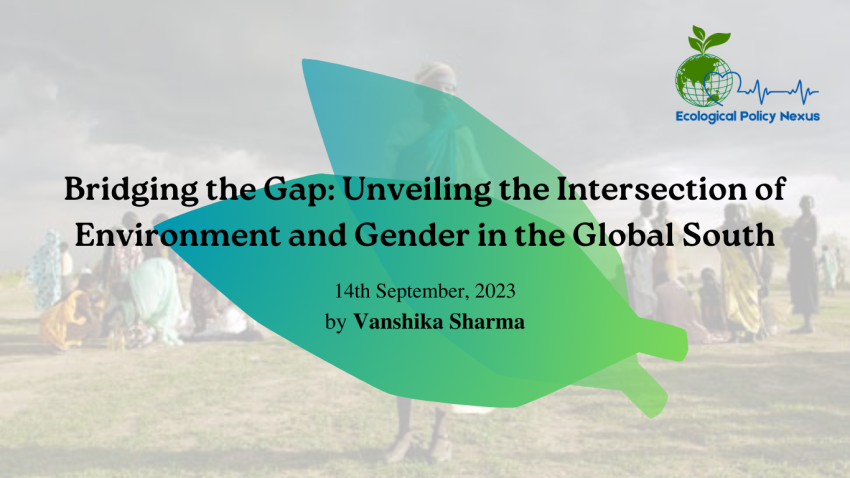In the pursuit of sustainable development and social progress, the Global South finds itself at the crossroads of two critical issues: the environment and gender equality. The interplay between these two areas reveals both challenges and opportunities, necessitating a comprehensive understanding and concerted action. Exploring the intersection of environment and gender in the Global South unveils the path to a more inclusive and sustainable future for all.
The Global South is grappling with pressing environmental challenges, including climate change, deforestation, water scarcity, and pollution. These issues disproportionately affect marginalized communities, with women often facing the greatest impact. Women, particularly those in rural areas, bear the responsibility of securing water, food, and fuel for their families, making them acutely vulnerable to environmental degradation. Their crucial roles in agriculture, natural resource management, and climate adaptation often go unrecognized.
Simultaneously, gender disparities persist in the Global South, hindering progress towards gender equality. Discrimination, and limited access to education, healthcare, and economic opportunities create barriers for women and girls. The repercussions of these inequalities are further exacerbated by environmental challenges, amplifying their social and economic vulnerabilities.
However, amidst these challenges lies immense potential. Recognizing the intersection of environment and gender allows us to envision comprehensive solutions that address the unique needs of communities in the Global South. By embracing this interconnectedness, we can foster inclusivity, sustainability, and resilience.
Promoting gender equality and environmental conservation go hand in hand. Women’s empowerment plays a crucial role in sustainable development. When women are given equal access to resources, education, and decision-making processes, they become agents of change, leading to more effective and sustainable environmental stewardship. By recognizing and valuing women’s knowledge, skills, and contributions, we unlock their potential as environmental leaders and catalysts for change.
Efforts to bridge the gap between environment and gender in the Global South require a multi-faceted approach:
Gender-responsive policies:
Governments and international organizations should adopt policies that integrate gender perspectives, promote women’s rights, and enhance their participation in environmental decision-making processes.
Capacity building and education:
Empowering women through training programs, knowledge sharing, and educational initiatives strengthens their understanding of environmental challenges and equips them with the tools to contribute to sustainable solutions.
Access to resources and opportunities:
Ensuring equitable access to land, water, clean energy, and finance creates an enabling environment for women to engage in sustainable livelihoods and entrepreneurship.
Awareness and advocacy:
Raising awareness about the intersection of environment and gender is vital. By promoting dialogue and fostering partnerships, we can amplify voices, share experiences, and advocate for inclusive and sustainable policies at all levels.
As we navigate the complex web of environmental and gender challenges, collaboration among governments, civil society, and the private sector is paramount. By working together, we can develop innovative solutions, leverage resources, and create meaningful change.
In the Global South, the intersection of environment and gender presents an opportunity to forge a path towards a more sustainable and equitable future. By embracing inclusivity, valuing women’s contributions, and addressing environmental challenges through a gender lens, we can chart a course toward a brighter, more resilient, and prosperous tomorrow for all in the Global South and beyond.
Only through collective action and an unwavering commitment to equality and environmental sustainability can we build a world that leaves no one behind.

